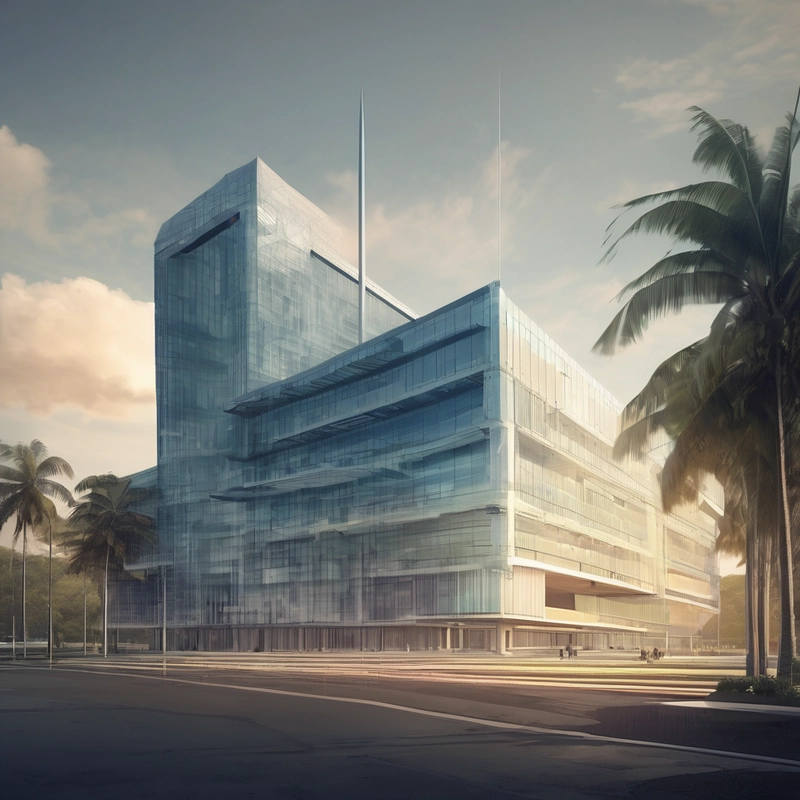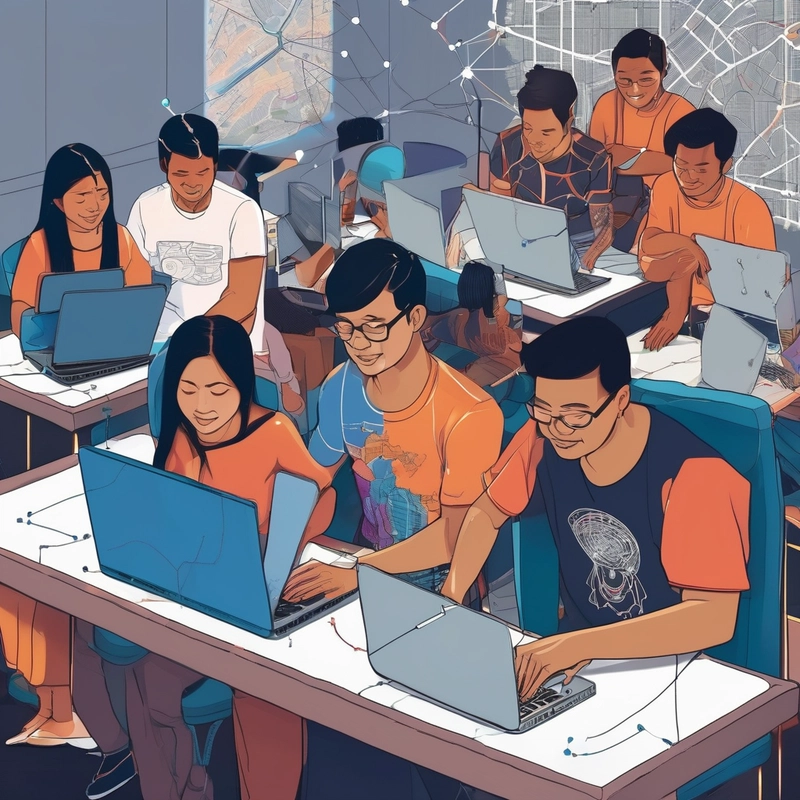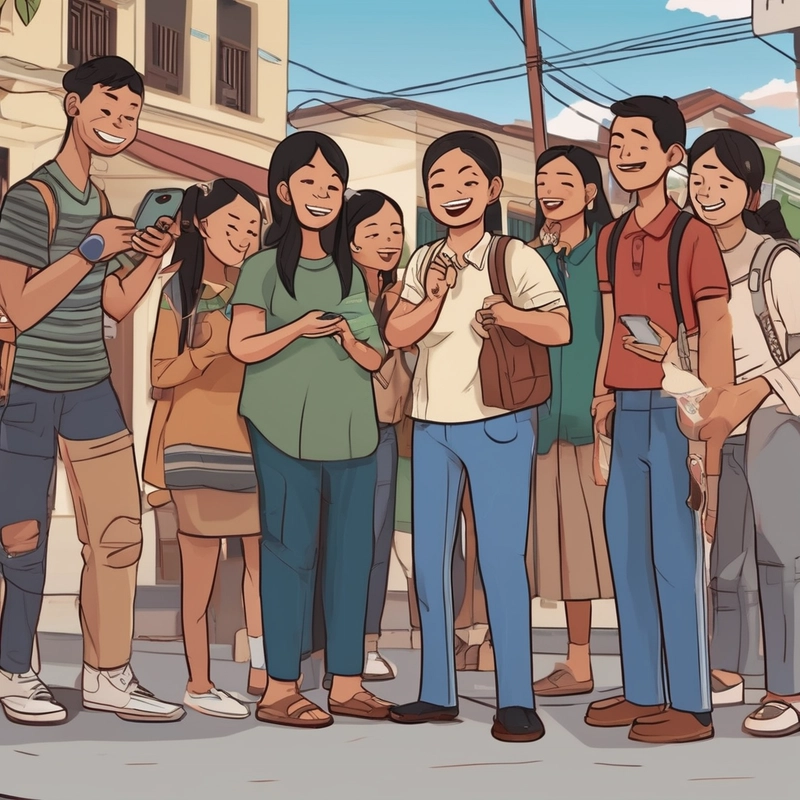Building Digital Sovereignty in the Philippines: Open-Source Solutions for Transparent, Secure Government
Open Source for the Philippines: Building Digital Sovereignty, One Line of Code at a Time
When I contributed to BetterGov.ph, we discovered a crucial truth: transparency isn’t optional—it’s infrastructure. For too long, the digital backbone of our government, from our local barangays to national agencies, has been silently held hostage by proprietary software. These aren’t just faceless corporations; they are gatekeepers demanding exorbitant licenses, dictating terms, and often leaving us vulnerable to both budget crises and security breaches [1]. As a reformed hacker, I’ve seen the digital shadows, and I know how bad actors think. My 25-year journey, from earning global recognition for cybersecurity expertise to leading blockchain strategy at Accenture, has shown me that complexity is often the enemy of both security and transparency. It’s often where the tackedahismo (the “just do it” or “fix it quick” mentality without proper planning) of quick fixes meets expensive, black-box solutions. This isn’t just about software; it’s about digital sovereignty and the trust we place in our government systems.
The Philippine Developing Plan 2023-2028 explicitly calls for bolstering digital infrastructure, yet our reliance on foreign proprietary vendors undermines this goal, creating both economic burdens and national security vulnerabilities [5]. What if we could build systems that are not only transparent and secure but also empower our local talent and keep our hard-earned taxpayers’ money within our economy? This isn’t a pipe dream. This is the promise of open-source initiatives, a path that leading open-source groups like Open Source Software PH (OSSPH) and government bodies like DITO-UPD show can lead to significant cost savings and stronger, locally-adapted solutions [3][2]. It’s time to shift from being mere consumers of foreign tech to becoming architects of our own digital future, ensuring that the digital divide isn’t just about internet access; it’s about digital trust.
The High Cost of Secrecy: Why Proprietary Software Fails the Filipino Public
Let’s face it: proprietary software is expensive. It’s not just the initial purchase; it’s the recurring license fees, the need for specialized (often foreign) expertise, and the lack of flexibility when our unique local needs arise. I’ve sat in Accenture boardrooms where they talk about “digital transformation” in terms of millions of dollars. But walking around Lucena City, or talking to officials in Quezon Province, I see the real-world impact of these costs: strained budgets, delayed projects, and systems that just don’t quite fit the Filipino context [1]. Studies from organizations like DITO-UPD and the Philippine Software Industry Association (PISA) reveal that pilot programs using open-source alternatives have demonstrated up to 300% cost savings over five years compared to their proprietary counterparts [4]. Imagine what those savings could do for our public services – more schools, better healthcare, or crucial infrastructure projects.
Beyond the financial drain, there’s a more insidious threat: security. Proprietary software, by its very nature, is a black box. Even with my experience in cybersecurity, we’re essentially trusting a third party to be our sole guardian, without full visibility into the code. This creates national security vulnerabilities that are often overlooked until it’s too late [1]. What happens if there’s a backdoor, a vulnerability only the vendor knows about, or worse, one exploited by malicious actors? As a reformed hacker, I know how easily such weaknesses can be leveraged. Our duty isn’t just protecting passwords; it’s ensuring government systems aren’t Swiss cheese, vulnerable from the inside out. Shifting to open source puts the code’s integrity in the hands of a broader, more transparent community, allowing for collective scrutiny and rapid identification of flaws, rather than relying on a single, opaque vendor [4].
Reclaiming Digital Sovereignty with Open Source Solutions
Digital sovereignty is more than a buzzword; it’s the ability of a nation to control its own digital destiny. For the Philippines, this means reducing our reliance on foreign vendors and fostering homegrown solutions. Open source isn’t merely a cost-cutting measure; it’s a strategic imperative that allows us to build, customize, and own our digital infrastructure. I’ve seen firsthand, from my Rotary service providing free internet to barangays to contributing to BetterGov.ph, that connectivity without trust is just faster disappointment [6]. Open source offers the foundation for that trust. The European Commission has even noted the Philippines’ long history and surge in open-source adoption, particularly in public and private sectors, validating this approach [1]. Initiatives by organizations like Open Source Software PH (OSSPH) are actively cultivating this ecosystem, proving that we have the talent to build our own solutions [2][6].
Consider the success stories emerging from our own backyard. Agencies like the Commission on Audit (COA) in Ilocos Norte have successfully implemented tailored open-source systems, demonstrating that local government units can, indeed, adapt and thrive with these alternatives [4]. In Quezon Province, land management tools developed with open-source principles are boosting efficiency and transparency. These aren’t just isolated victories; they are beacons, showing that community-developed open-source solutions excel in local adaptation because they are built by, and for, the people who understand the unique challenges and cultural nuances of our country [8]. It’s like managing a sari-sari store inventory; if you can keep track of incoming and outgoing goods, you can understand the distributed ledgers that make blockchain-enabled government systems transparent and resistant to manipulation. This localized expertise prevents the “Square Peg in a Round Hole” problem often encountered with generic proprietary solutions.
Architecting Trust: Open Source for Scam Prevention and Accountability
Open-source principles serve as a powerful bulwark against scams and corruption, fundamentally changing the landscape of digital trust. My work developing the ScamGuard AI System made it clear: bad actors thrive in obscurity. Proprietary systems, with their hidden code, create fertile ground for vulnerabilities that criminals exploit and that can be manipulated for illicit gains. As someone who has built systems for over two decades, and has seen the digital shadows, I can tell you that a lack of transparency in government software makes it incredibly difficult to trace fraudulent activities or ensure accountability [7]. How can we monitor for tackedahismo if the very tools we use are opaque?
This is where the Civic Architect in me sees open source as a game-changer. By making the source code publicly available for scrutiny, we democratize the oversight process. Every developer, every cybersecurity enthusiast, and even every vigilant citizen can theoretically review it for bugs, backdoors, or malicious intent—leading to cleaner, more secure, and more auditable systems [8]. It creates a DevSecOps environment where accountability is baked in, not bolted on. When contributing to BetterGov.ph, we’re proving that by building government systems on open-source foundations, we inherently build in transparency. This allows for public and expert verification of how data is processed, how funds are allocated, and how services are delivered. If you can track every play in a PBA game, imagine being able to track every peso in government spending through a transparent, open-source ledger. These principles directly counter the opportunistic nature of scams, whether they’re targeting individuals or siphoning public funds [9]. Open source isn’t just about reducing costs; it’s about making it harder for anyone—inside or outside the government—to hide nefarious digital activities.
Building a Local Ecosystem: The Power of Filipino Developers
The true strength of adopting open source lies not just in the software itself, but in the community it fosters. The Philippines has a wealth of talented developers, engineers, and tech enthusiasts. Imagine channeling this collective potential into building and maintaining the very digital infrastructure that serves our nation. Initiatives like Open Source Software PH (OSSPH) are already doing this, nurturing a developer-led movement to grow the open-source community across the Philippines [2][10]. We don’t need to perpetually import solutions; we can cultivate our own, building a robust “local developer ecosystem” that enhances our digital resilience and capacity for innovation.
My startup founding and scaling experiences taught me that resilience and iteration matter more than credentials, and that communities, not just code, drive change. We have proof: the successful local implementations in Ilocos Norte or Quezon Province were not just about finding software; they were about empowering local IT teams and engaging regional talent to customize solutions that truly work for their specific contexts [4]. This approach not only generates local employment in the tech sector but also builds a sense of ownership and expertise within our country’s borders. Empowering local Filipino developers to contribute to and benefit from open-source government projects is an investment in our collective future. It pushes us beyond the tackedahismo mindset, encouraging sustainable development and making Accenture-level expertise feel like kuya advice exchanged over coffee at a Lucena turo-turo. When we prioritize local talent, we’re not just adopting technology; we’re building a sustainable engine for digital progress and ensuring that the benefits reverberate throughout our communities [10].
Conclusion: A Call to Action for Digital Governance
The conversation around government software in the Philippines needs to move beyond mere cost-benefit analyses. This isn’t just about saving money, crucial as that is. It’s about digital sovereignty, national security, scam prevention, and the empowerment of our local developer ecosystem. My 25 years in this field, from reformed hacker to blockchain strategist, and now as a contributor to BetterGov.ph, has solidified my belief: open-source alternatives are not just viable; they are essential for a transparent, secure, and digitally sovereign Philippines [5].
As a Civic Architect, I believe the digital divide isn’t about internet access alone; it’s about digital trust. At BetterGov.ph, we are working to build that infrastructure of transparency. As a Protector-Mentor, I’ve seen the digital shadows, and I know our duty extends beyond passwords to ensuring our government systems are not Swiss cheese. And as a Relatable Futurist, I truly believe that if you can manage a sari-sari store, you can understand distributed ledgers. Tech is just a set of tools—let’s stop treating it like magic and start using it to fix real-world problems. By embracing open-source solutions, supporting our local developers, and demanding transparency, we can collectively build a future where civic participation is powered by robust, accountable, and Filipino-owned digital infrastructure [10]. The time for comprehensive digital governance through open source is now.
Sources
- Open Source Software Country Intelligence Report …
- Open Source Software PH (OSSPH): Blog
- Open Source Adoption Continues To Be Embraced In The …
- (PDF) Issues and Challenges of Free and Open Source …
- Impact of open source in the developing countries
- Open Source Software PH
- Philippine Development Plan 2023-2028
- Philippines – Information and Communications Technology
- GOVERNMENT TO EXPLORE BENEFITS OF OPEN SOURCE …
- Philippines Urbanization Review



